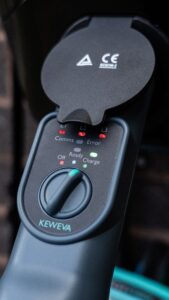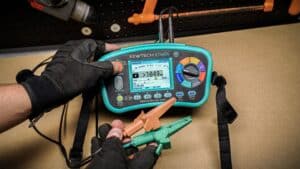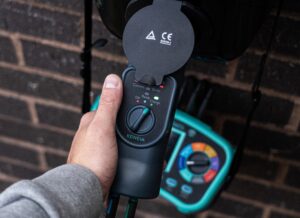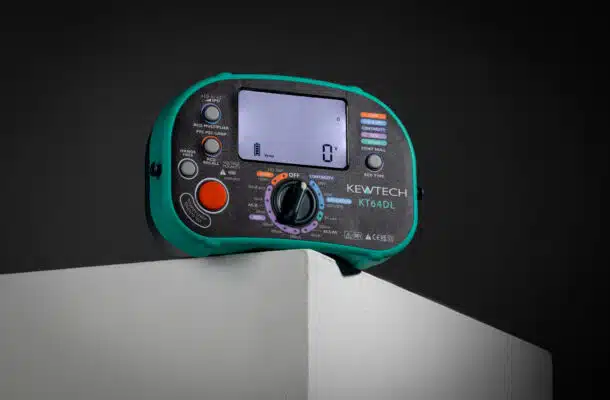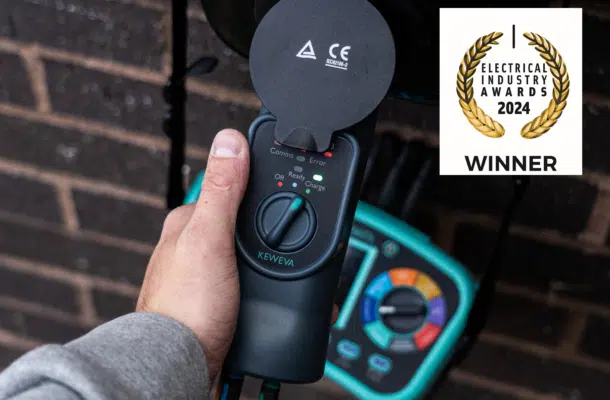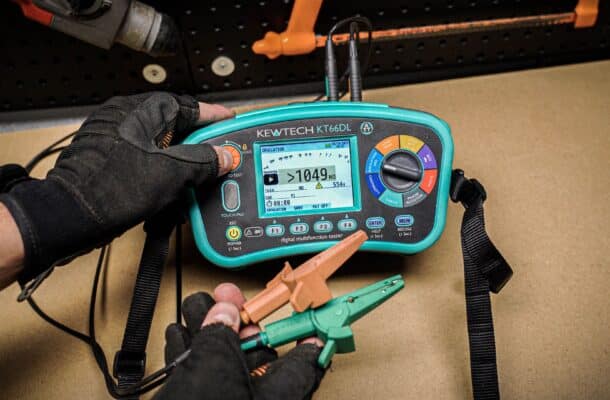ELECTRIC VEHICLE CHARGING INSTALLATIONS
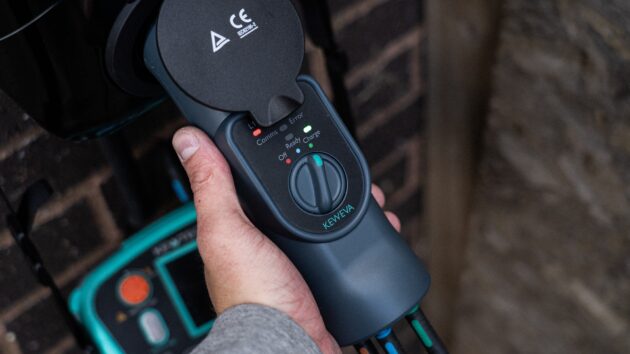
To meet the governments sustainability and carbon net zero targets they have banned the sale of new fossil fuelled vehicles from 2035. One of the major impacts of this policy will be the necessity to move to all electric vehicles (EVs) or vehicles not powered by fossil fuels such as hydrogen.
Compliance with Standards.
These increasing numbers of EVs may need to be charged at the user’s home, in the workplace or in public locations. British Standard 7671:2018: Amendment 2: 2022, commonly known as the IET Wiring Regulations, is the accepted safety standard for most low voltage electrical installations. Whilst the general rules of BS 7671 apply to electrical installations, where there are additional hazards BS 7671 has a Special Installation or Special Location in Part 7. Part 7 requirements modify or add to the general rules listed in Parts 1-6 to address these additional hazards. Section 722 covers Electric Vehicle Charging Installations.
New installations, additions and alterations to existing installations are required to comply with the current edition of BS 7671 not an earlier edition regardless of the age of an existing installation.
Where the maximum demand on the installation, with the intended EV charging equipment connected, does not exceed 13.8kVA the Energy Networks Association should be notified. If the total maximum demand on the installation, with the EV charging equipment installed, exceeds 13.8kVA the District Network Operator (DNO) should be consulted before the installation work commences. DNOs will not usually consent to high current loads, such as EV charging equipment and heat pumps, to be supplied from a “looped supply”. A looped supply is where premises are not directly supplied individually but are shared by looping the DNO supply cable in and out of premises. The DNO should be consulted to verify if there is any restriction on the capacity of their supply and any condition, they may apply to the consumer. It could be for example a requirement to have load curtailment on the installation to ensure that the maximum demand on the supply does not exceed a specified rating.
Insurers may pose additional requirements on their policies for charging equipment installed inside buildings and where vehicles are charged near building with addition risks such as building made of combustible materials, extensive glazing and high-risk buildings. They may refer to a document known as RC59 published by the RiscAuthority. This document can be download free from the internet. Designers and installers should ask their clients if their insurance company has been consulted for any additional requirements, they may wish to impose in respect of the installation of the EV charging equipment.
Circuit Protection
All low voltage electrical installations in scope for BS 7671 are required to be designed to comply with Regulation 132.1. The load current and duration of sustained loads are what are known as long hour loads. Unlike, say an oven where the load current may be high, that load current is not continuous as the thermostat will switch the load to maintain a set temperature. EV load currents may continuous for extended periods of time. Manufacturers of distribution boards and consumer units may place special conditions for continuous extended loading on their equipment for periods longer than 30 minutes or 1 hour. This may be spacing of circuit breakers inside the unit, increasing circuit breakers ratings and therefore cable sizing. Data must be obtained for the chosen manufacturers equipment to verify any special requirements for continuous loading. BS 7671 refers to this requirement in Regulation 536.4.202 and 134.1.1.
PME Earthing Systems
An important consideration for EV installations is to verify the earthing system for the installation that the EV charging point is going to be supplied from. Whilst an earthing system may have the appearance of a TN-S system it may not be, due to cable repairs on the DNO network. If the earthing system cannot be verified by enquiry with the DNO is should be considered by default to be TN-C-S (PME).
BS 7671 Regulation 722.411.4.1 forbids the use of PME earthing systems on EV installations unless special methods of protection are applied for vehicles that are intended to be charged outdoors. The reason for this is that if the Protective Earth and Neutral (PEN) conductor becomes open circuit the body of the vehicle may become live, anyone coming in to contact with the vehicle could receive a fatal shock. Regulation 722.411.4.1 provides 4 alternative measures that may be applied to protect users from PEN failures. Most reputable EV charging equipment manufacturers offer open PEN detection built in to their products.
Even if the earthing system is TN-S or TT the installation may be connected to an adjacent premises by common bonded gas or water pipework. On a TT earthing system, the consumers electrode will need to have a separation distance from adjacent premises having a PME supply with bonded buried pipework. This is needed to prevent impressed voltages appearing on the consumers electrode, different DNOs will specify different distances but this is commonly around 5 metres.
RCD Protection
Due to DC currents that may be present in the AC charging supply BS 7671 places special requirements in the selection of RCDs to protect against these DC components stopping the RCD from operating correctly, these can be found in Regulation 722.553.101.
The EV socket must have additional RCD protection and this can either be on the supply to the EV charging equipment or built in to the EV charging equipment. The RCD must either be a 30mA Type B RCD or a 30mA Type A or Type F with RDC-DD DC protection. The selected manufacturer of the EV charging equipment should be asked to provide a Declaration of Conformity specifying compliance with all of the standards listed in Section 722 of BS 7671. RCDs to BS EN 61008 and RCBOs to BS EN 61009 are required to have user test buttons to comply with their respective standards. An indication of non-compliance, or partial compliance with these standards, is the lack of a user test button.
Inspection and Testing
Unless the EV charging equipment is being installed as a replacement on an existing charging installation circuit Regulation 722.533.101 requires a new individual final circuit be installed to supply a vehicle charging equipment. EV charging equipment cannot be looped together on a radial circuit, see Regulation 722.533.101. Electric vehicle charging equipment can supply more than one charging socket.
Regulation 641.1 requires the new installation to be inspected and tested to verify compliance with BS 7671 and, in particular the requirements of Section 722 for an EV charging installation. An Electrical Installation Certificate (EIC) will need to be completed for the new installation to comply with Regulation 644.1. The inspection form for an EIC in Appendix 6 of BS 7671 only has a requirement to declare the presence of a special location. The inspection will need to include verification that the additional requirements of Section 722 have been complied with where required.
After the installation has been inspected it must be tested to verify if the requirements of BS 7671 Regulation 643.1 have been met. The Kewtech Multifunction Tester, KT66DL is able to carry out all the full range of the required tests with an instrument that is both convenient and intuitive to use.
Live polarity tests, earth loop impedance tests and RCD tests can be carried out at the socket using test probes with the front fascia of the charging point removed from enclosure. However, this would amount to a breach of Regulation 14 of the Electricity at Work Regulation 1989 (EAWR) which forbids working on, or near, live conductors unless it is unreasonable in all the circumstances. There is an alternative to live working on or near live conductors and this is to use a special adaptor plugged in to the Mode 3 EV socket and hence comply with Regulation 14 of the EAWR. This adaptor needs to simulate the presence of a vehicle on charge to enable the tests to be performed.
With safety and users’ convenience in mind Kewtech have produced the KEWEVA universal testing adaptor as a companion to the Kewtech KT66DL MFT. The KEWEVA will simulate the presence of a vehicle on charge and importantly verifies that the handshake signal between the vehicle and charge point is correct. The KEWEVA can be plugged directly in to a Mode 3 socket on the charging equipment or, where the charging equipment has a tethered cable, in to the vehicle end of the charging cable.
A Mode 2 13A charging socket can be tested without the EVSE adaptor using the KT66DL multifunction tester.
The KEWEVA is connected to the KT66DL using the standard 4mm connecting leads and can be connected to other manufacturers’ MFTs that have the required range of test functions.
The KEWEVA is able to facilitate the testing of both single phase and 3 phase Mode 3 sockets.
When paired with the Kewtech KT66DL the KEWEVA the following tests can safely be performed.
- Earth loop impedance tests.
- Type B RCD tests
- Type A RCD tests.
- 6mA RDC-DD tests.
In addition to reducing the shock risk the KEWEVA has the added advantage of not requiring dismantling of the EV charge point saving testing time or, and the need to re-test after the EV charging equipment has been re-assembled.
Employers are required to carry out risk assessments and then to produce method statements (RAMS) for work activities under the Management of Health and Safety at Work Regulations 1999. It may be consideration in the RAMS to use a Kewtech EVA adaptor as a control measure to reduce the risk of electric shock when testing EV charge points and to comply with Regulation 14 of the EAWR.
To find out more about the new KEWEVA Testing Adapter you can watch this video here.
